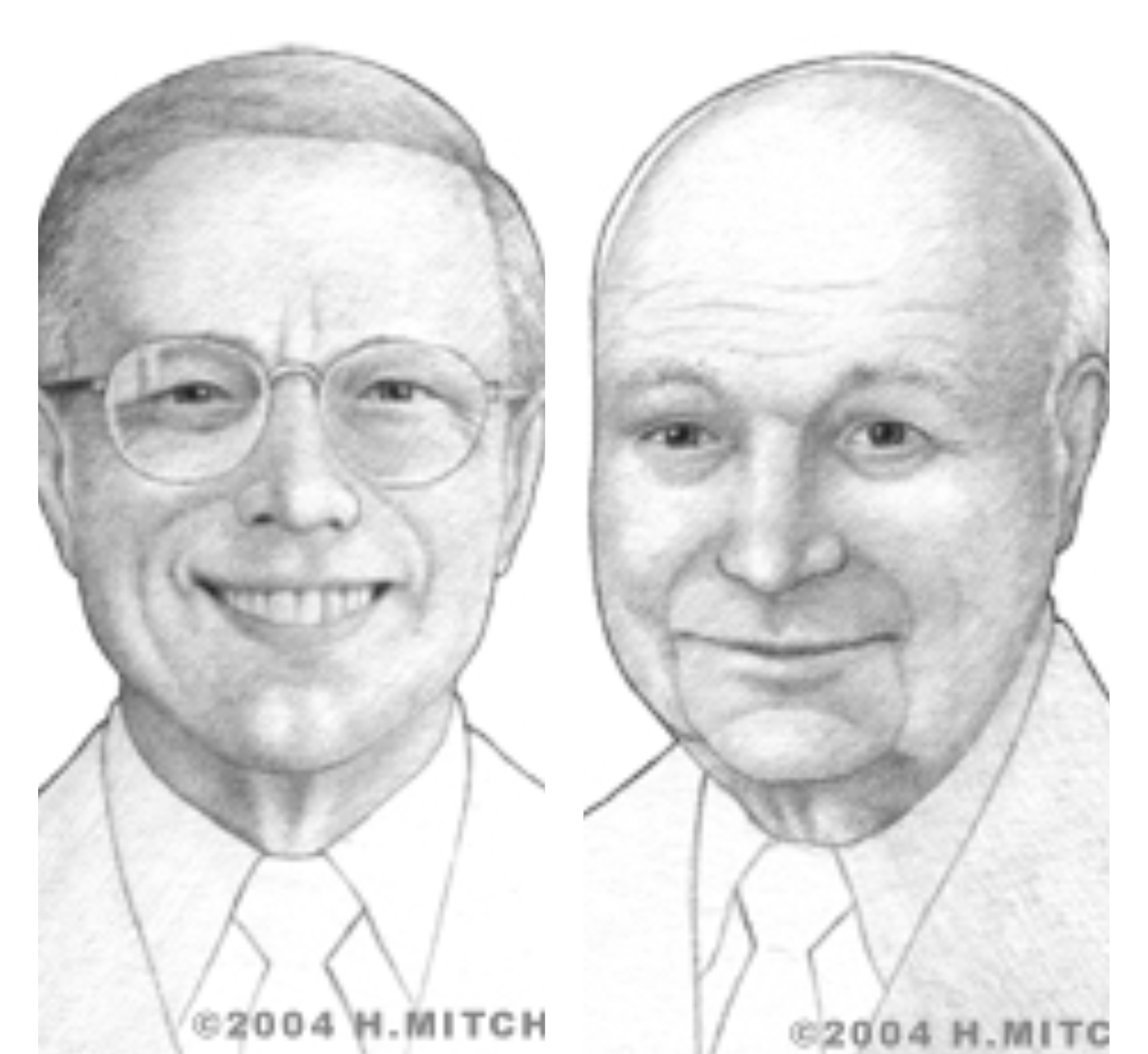Ivan Getting and Brad Parkinson
Global Positioning System technology, or GPS, has in recent years become a part of mainstream society, available to individual consumers in the form of handheld GPS devices, as well as in vehicles like farm tractors, helicopters, trucks, and automobiles. This technology, which has the ability to pinpoint specific locations on the planet with near-perfect accuracy, was originally developed in the 1970s for military applications and has since been deployed in navigation, national defense, air traffic control, search and rescue, and environmental research.
GPS took decades to build, but one of its creators, Ivan A. Getting, first envisioned such a system more than fifty years ago. Getting, born in 1912 in New York, is credited, along with scientist Bradford W. Parkinson, with the invention of GPS. Getting grew up in Pittsburgh and earned degrees from the Massachuetts Institute of Technology (MIT) and Oxford University.
Parkinson was born in 1935 in Wisconsin and received his BS from the U.S. Naval Academy, SM from MIT, and PhD from Stanford University.
During World War II, Getting worked for MIT where he directed the Division of Fire Control and Army Radar. He led a team that developed a tracking radar that helped the Allies destroy 95 percent of V-1 cruise bombs directed at England by Germany. He subsequently became vice president for research and engineering at Raytheon Co., where he was responsible for the development of the Sparrow III and Hawk missile systems.
In 1960, he founded his own company, The Aerospace Corporation, based in El Segundo, California, where he worked on ballistic missile and space launch systems as well as anti-aircraft technology. The company was a non-profit entity that provided research and development services for the Department of Defense and other government agencies. He remained president of the company until his retirement in 1977.
It was while working for Raytheon in the 1950s that Getting first conceived of the idea of using a system of satellites to produce precise positioning data for rapidly moving objects such as missiles and airplanes.
Parkinson, meanwhile, began his service with the U.S. Air Force in 1957. Early in his career, he headed the Department of Astronautics and Computer Science at the U.S. Air Force Academy.
In 1972, he was chosen to direct the Department of Defense’s GPS program, which was formed based on Getting’s original concepts. Few had confidence in the program at the time, as the idea of GPS was met with a great deal of skepticism. Parkinson was charged with organizing the project, acting as "chief architect" of GPS through the system's conceptualization, engineering development, and implementation.
GPS technology uses signals transmitted by specifically designated satellites that serve as reference points while moving around the earth in precisely defined orbits. GPS receivers take in signals from the satellites and are able to calculate positions with incredible accuracy based on the difference in arrival time of signals from the different satellites.
By fall of 1973, the project was well underway, and five years later, the first differential GPS systems were functional – and accurate within three meters. The project, dubbed the NAVSTAR GPS system, was a tremendous success, and Parkinson was honored with the Defense Department Superior Performance Award for his achievement in bringing the project to fruition. He retired from the Air Force as a colonel in 1978.
GPS evolved over the next twenty years to become accurate within less than one meter. The technology was fully functional by 2000, when it became inexpensive enough to integrate into consumer products such as cars, trucks, boats, and handheld GPS units.
In 2003, Getting and Parkinson were honored with the $500,000 Charles Stark Draper Prize for the invention of the GPS system. Sadly, also that year, Getting passed away at the age of 91.
Parkinson continues to teach at Stanford University, where he is the Edward C. Wells Professor of Aeronautics and Astronautics. He works on GPS and robotics research. With FAA sponsorship, Parkinson and his students developed a fully blind landing system for aircraft. He has also worked on NASA’s Gravity Probe B project.
Parkinson is chairman of the board of The Aerospace Corporation and serves as co-chair of the Jet Propulsion Laboratory Advisory Council. His numerous awards include the Discover Innovation Award, NASA's Distinguished Public Service Medal, the IEEE Simon Ramo Award, and induction into the National Inventors’ Hall of Fame. He lives in Mountain View, California.


